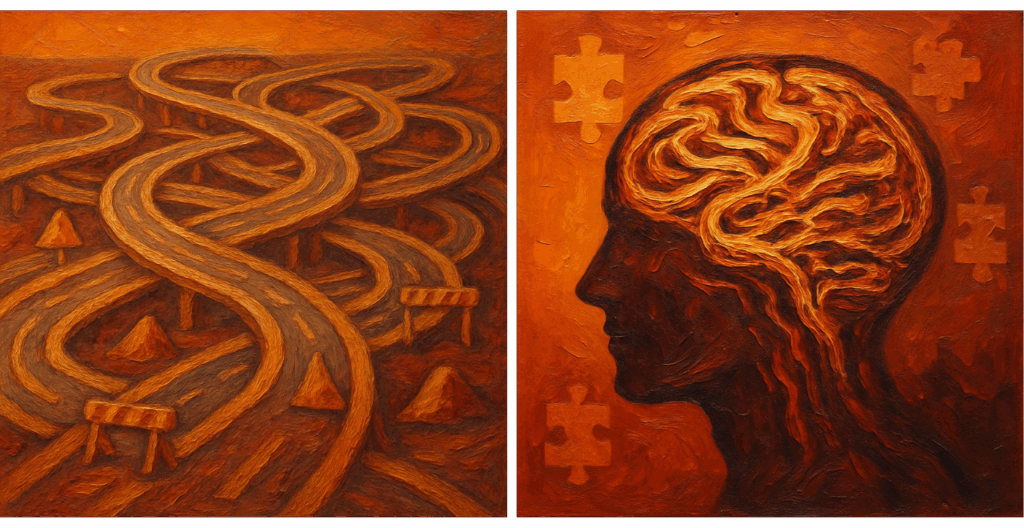
We’ve been told that adaptability is a superpower – stay nimble, embrace change, pivot quickly – but the challenge is that your brain treats every adjustment like a puzzle that needs solving.
Each time your team gets reorganized or your favorite coffee shop closes, your brain has to build new neural pathways and update its predictions about how the world works, and this process draws from the same cognitive resources you use for decision-making and focus.
Normally, this isn’t a problem. Over time, we develop habits and routines that become automatic and require minimal mental effort.
But sometimes we go through extended periods where everything keeps changing – new job, new city, new relationship, new technology… During these periods, your brain never gets the chance to settle into efficient patterns.
Researchers have documented this phenomenon, when people experience too many changes in a short period and develop what’s known as change fatigue.
When we’re in this state, our instincts often tell us to push through, work harder, or wait for things to stabilize.
But pushing through when you’re already cognitively depleted usually backfires, working harder depletes your resources further, and waiting for stability that may never come leaves you stuck.
Here’s what can actually help when you’re dealing with too much change:
1. Stop trying to bounce back. The phrase itself creates the wrong expectation. Instead of trying to get back to how things used to be, focus on adapting to where you are now. I want to clarify this isn’t about fake positivity! It’s about not wasting energy trying to recreate circumstances that no longer exist and freeing up mental resources to deal with what’s actually in front of you.
2. Take inventory of what you’ve learned. What works, what doesn’t, what might you want to tweak? Spend a few minutes exploring what you’ve learned through change, such as which relationships give you energy, which routines feel sustainable, which projects spark curiosity. This kind of metacognitive practice helps your brain recognize patterns in the chaos.
3. Design a tiny experiment. Instead of waiting for life to calm down, turn it into a laboratory. Maybe you experiment with a brief daily walk before work or declining one commitment every week. The point is to actively engage with uncertainty and turn the anxiety into curiosity.
Change will keep happening whether you want it or not. But you can influence how much it costs you.
When you accept that adaptation takes energy, when you notice what you’ve learned, and when you experiment rather than waiting for perfect conditions, you help your brain navigate change without depleting all your resources.
Tiny Experiment of the Week
Put these ideas into practice by try this week’s tiny experiment designed to help you associate change with possibility:
I will [reflect on how I’ve adapted to recent changes] for [5 days]
You might surprise yourself! Want to dig deeper into designing your own tiny experiments? Get your copy of the book.
